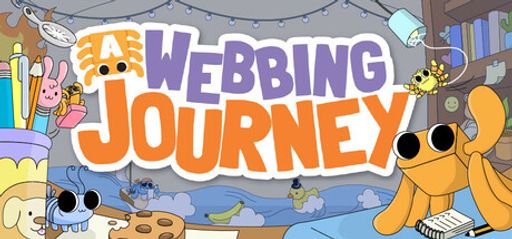Overall Impressions
I hung from the ceiling and swung through Fire Totem Games’ A Webbing Journey. The result? Cute chaos that feels like an arts-and-crafts day gone wonderfully wild. This open-play game turns your house into a playground of moving parts and web-shooting tricks. It won’t change the genre, but it reminds me of Trine and World of Goo in fun ways. I left many rooms smiling—and a few scratching my head. The game is full of charm, though it can feel a bit repetitive.

Gameplay Mechanics
Swinging feels as smooth as stirring a cup of coffee. You point, shoot, and let your web fling you over tables and lamps. One player called it “my dream Spider-Man game,” and I agree. The physics work well, though sometimes webs stick to odd surfaces. Those glitches are rare and don’t slow things down.
Building structures by wrapping webs around objects was a highlight. I once made a bridge of soda cans and cushions to cross a puddle of spilled paint. That’s the type of playful tinkering this game invites. After a dozen rooms, however, the puzzles start to repeat: connect items, pull a lever, reach the exit. Secret-filled levels get praise, and most hide cleverly—but a few are so hard to find I wondered if they even exist.
A couple of bugs popped up: a stubborn V-Sync problem and one where your character’s eye color resets when you move between areas. Flicking V-Sync off and on fixed the first, but the disappearing eye settings felt like a minor betrayal. Still, these hiccups don’t ruin the fun.

Story and Characters
A Webbing Journey skips a big storyline in favor of lighthearted play. Your character is an unnamed spider you can customize in shape and color as you collect paint droplets. You find tiny trinkets that hint at a hand-drawn family tale, but the game never demands an emotional investment. It’s more like finding a half-read diary under a couch.
You learn about “other characters” through props: a torn teddy in a child’s room hints at past toy battles, a cracked photo frame on the mantel suggests the family who lived here. The game trusts you to fill in the blanks—until the final boss shows up, feeling awkward and undercooked.
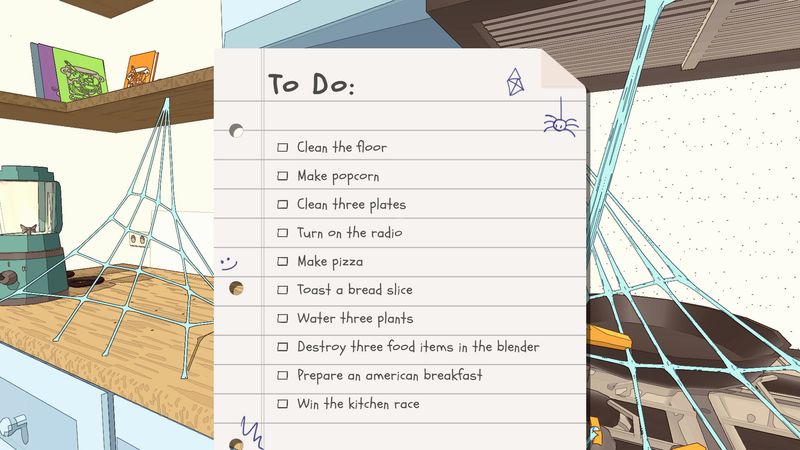
Visuals and Graphics
The art style resembles a children’s book drawn by an enthusiastic architect. Every room bursts with color and detail, from pastel wallpaper to scuffed tabletops. Fire Totem Games nails the cozy-catastrophe aesthetic: lamps teeter, mugs wobble, and picture frames wobble under your weight. Textures remain crisp even on budget rigs. Shadows dance realistically beneath your webs. I never squinted at a pixel.
Occasionally, the framerate shakes on complex physics scenes. A few players noted hitching when dozens of objects swing. Big levels might demand a GPU upgrade to stay buttery smooth. But for a studio of four main developers hailing from Austria, this polish impresses.
Sound and Music
The soundtrack blends plucky acoustic guitar with gentle piano. It soothes rather than amps adrenaline. A few tracks grow repetitive, but they never grate. Sound effects shine: the thunk of a wooden block, the goo-ey slurp as your web hits glass, and the squeak of a floorboard under tension. No voice actors murk the mood with overdramatic lines. Instead, atmospheric clips—like the distant hum of traffic or a moth’s flutter—deepen immersion. In short, audio plays second fiddle to gameplay, but it hums in perfect harmony.
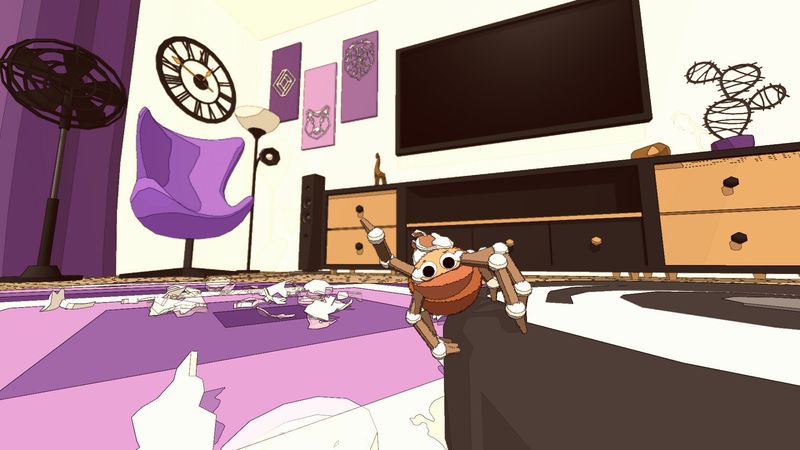
Difficulty and Replayability
A Webbing Journey leans easy. It invites you to wander and tinker. Hardcore players might crave ordeal-level puzzles. Instead, the game offers gentle curiosity. You can skip collectible hunts if you choose. I spent hours detouring off-track to chase hidden nooks and door-crack glimpses. That freedom charms, but it also undercuts urgency.
Two glitches aside, I never found a run-through that demanded a reload. Death resets simply, with no penalty. Some might label this too forgiving. Yet I appreciated the zen vibe. One user described going “ZEN and swinging around.” That nails the feeling. Will you replay? Only if you adore puzzling out every secret or filming slow-mo web tricks. I returned three times to capture screencaps of my most ridiculous bridges.
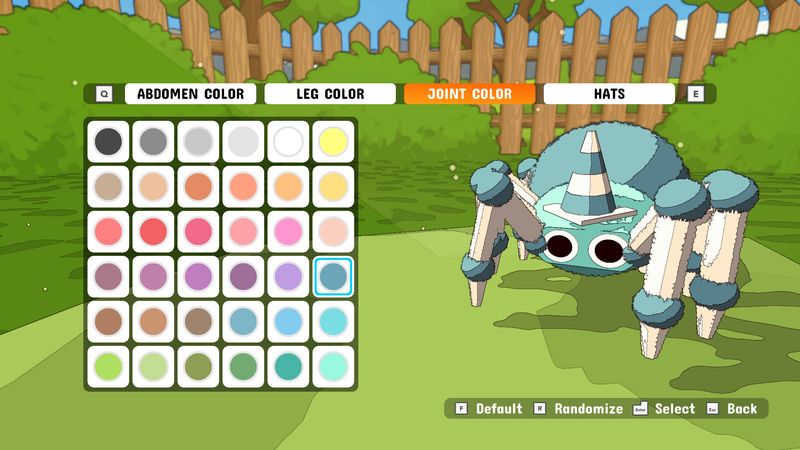
Developer Trivia
Fire Totem Games began as a duo sketching webs on napkins at a Viennese café. They later recruited two more pals to build physics prototypes in Unity. Publisher Future Friends Games championed their project at indie showcases, helping secure talent funding. Reportedly, the team cried tears of joy when positive reviews hit “Very Positive” status on Steam. Their secret sauce? A mix of earnest passion and endless playtests with nieces, nephews, and startled roommates.
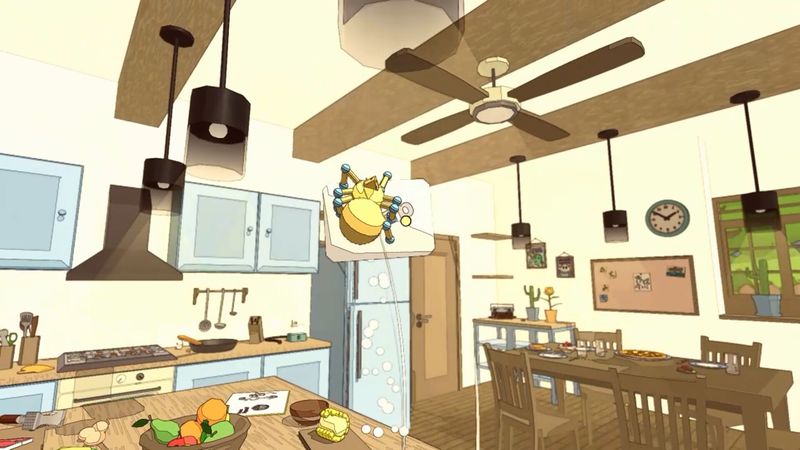
Final Thoughts
A Webbing Journey delivers whimsical web-slinging fun with a forgiving difficulty and sandbox heart. It dazzles in small doses but sometimes feels repetitive. Bugs remain minor irritants, not deal-breakers. If you crave a lighthearted physics playground with endearing visuals and witch-warm charm, this one sticks.
Rating: 4 out of 5 stars
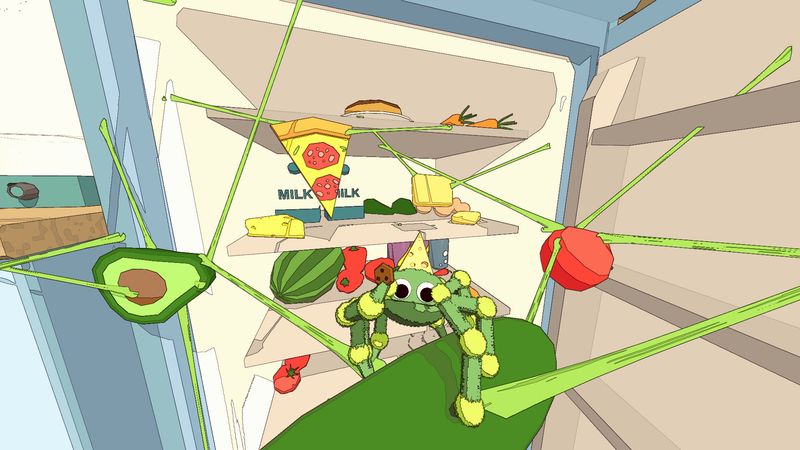
A Short Hike’s joyful physics-based mechanics and charming art style create lively environments perfect for relaxed exploration, while its accessible difficulty and inventive structure-weaving puzzles appeal to both casual players and puzzle enthusiasts. However, some challenges grow repetitive over time, minor technical glitches can interrupt the serene experience, and the final boss encounter feels underdeveloped. Overall, this indie adventure balances creative gameplay and visual charm, making A Short Hike a delightful choice despite a few rough edges.
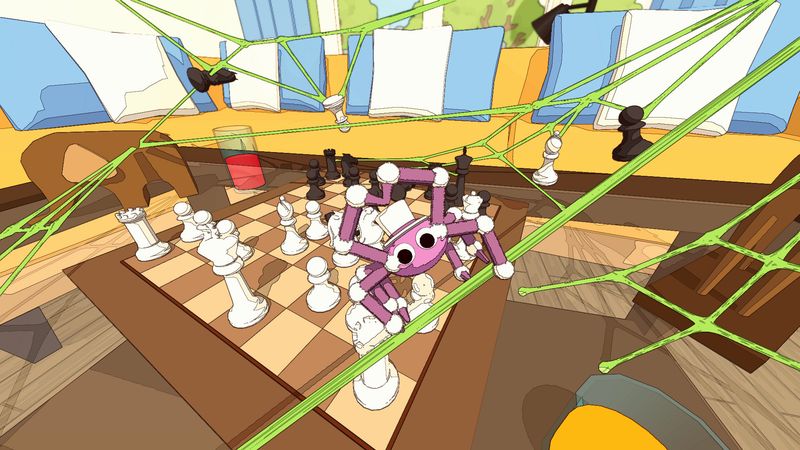
If you loved Trine, World of Goo, or any game that lets you turn living rooms into obstacle courses, A Webbing Journey deserves a swing. Just don’t expect it to reinvent your eight-legged wheel.

